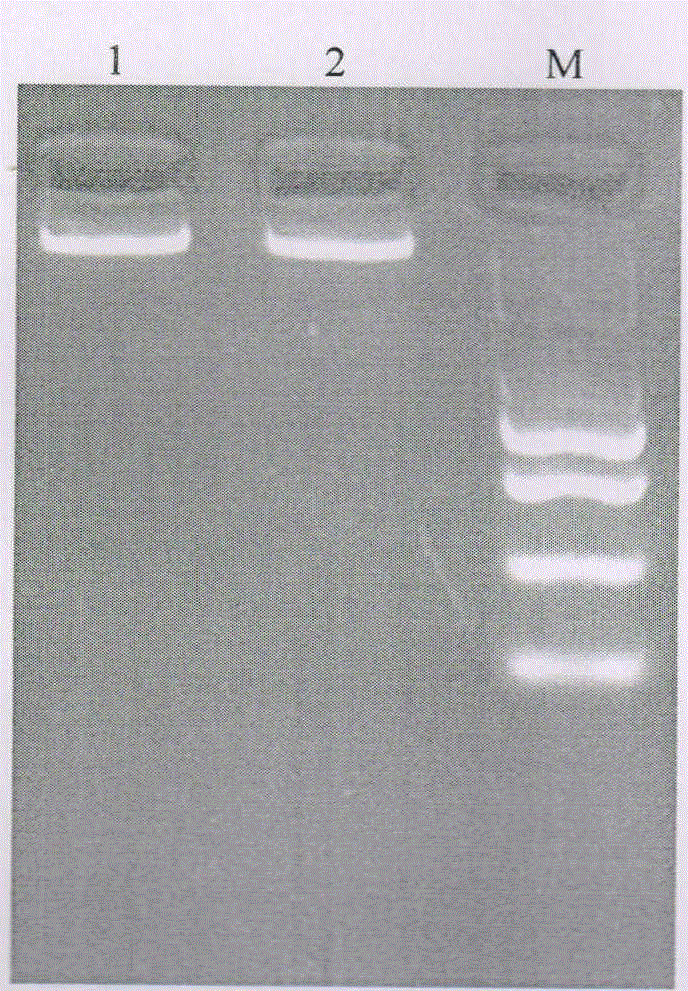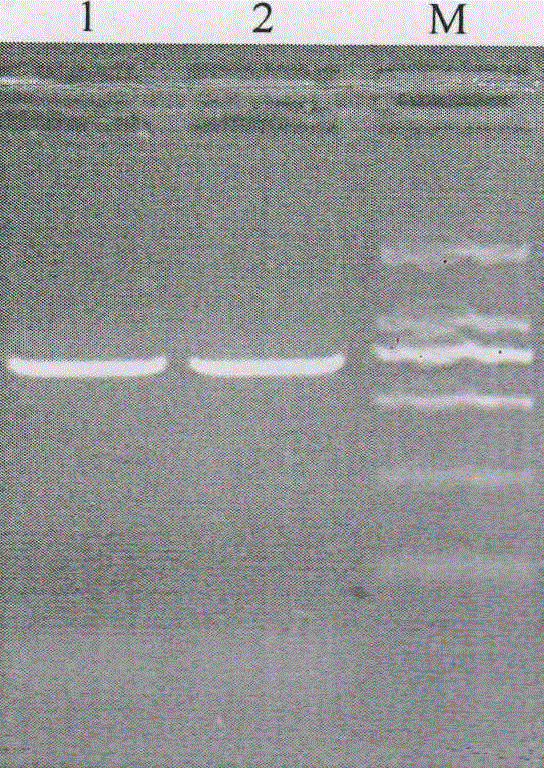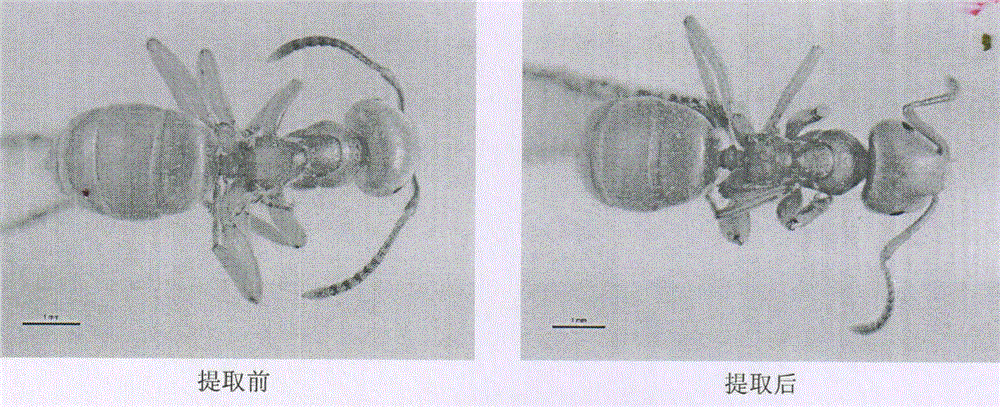Damage-free cold extraction method for genome DNA of small insects
A genomic and cold extraction technology, applied in the field of molecular biology, can solve the problems of insufficient DNA release, genomic DNA degradation, affecting DNA quality, etc., to reduce DNA degradation, enhance digestion, and improve yield.
- Summary
- Abstract
- Description
- Claims
- Application Information
AI Technical Summary
Problems solved by technology
Method used
Image
Examples
Embodiment 1
[0029] Genomic DNA of Hymenoptera ants (sample 1) was extracted.
[0030] 1 Preparation of extraction buffer
[0031] Prepare 400 μL extraction buffer: 40 μL 10×PCR Buffer Ⅱ, 1.8 μL NP40, 1.8 μL Tween20, 12 μL proteinase K (20 mg / mL), 344.4 μL ddH 2 O.
[0032] 2 Pretreatment of worms
[0033] First carefully clean the impurities on the surface of the insect body with 95% alcohol, then wash it three times with distilled water, and finally use absorbent paper to dry the water on the surface of the insect body.
[0034] 3 Extraction of genomic DNA
[0035] (1) Put the ants into a centrifuge tube, add 300 μL of extraction buffer, bathe in water at 50°C for 1 hour, and mix by gently inverting every 15 minutes;
[0036] (2) Store at -20°C for 15 hours, and cold extract genomic DNA;
[0037] (3) Add 9 μL of proteinase K (20 mg / mL), bathe in 50°C water for 1 hour, and mix by gently inverting every 15 minutes;
[0038] (4) Water bath at 95°C for 10 minutes to inactivate proteina...
Embodiment 2
[0046] Genomic DNA of Homoptera leafhopper (sample 2) was extracted.
[0047] 1 Preparation of extraction buffer
[0048] Prepare 300 μL extraction buffer: 30 μL 10×PCR Buffer Ⅱ, 1.35 μL NP40, 1.35 μL Tween20, 9 μL proteinase K (20 mg / mL), 258.3 μL ddH 2 O.
[0049] 2 Pretreatment of worm bodies (same as Example 1)
[0050] 3 Extraction of genomic DNA
[0051] (1) Put the leafhopper into a centrifuge tube, add 200 μL of extraction buffer, bathe in water at 50°C for 1 hour, and mix by gently inverting every 15 minutes;
[0052] (2) Store at -20°C for 15 hours, and cold extract genomic DNA;
[0053] (3) Add 6 μL of proteinase K (20 mg / mL), bathe in 50°C water for 1 hour, and mix by gently inverting every 15 minutes;
[0054] (4) Water bath at 95°C for 10 minutes to inactivate proteinase K;
[0055] (5) Take the leafhopper out of the centrifuge tube with sterile tweezers, and put it in 95% alcohol for storage. The solution in the centrifuge tube contains the genomic DNA of...
PUM
 Login to View More
Login to View More Abstract
Description
Claims
Application Information
 Login to View More
Login to View More - R&D
- Intellectual Property
- Life Sciences
- Materials
- Tech Scout
- Unparalleled Data Quality
- Higher Quality Content
- 60% Fewer Hallucinations
Browse by: Latest US Patents, China's latest patents, Technical Efficacy Thesaurus, Application Domain, Technology Topic, Popular Technical Reports.
© 2025 PatSnap. All rights reserved.Legal|Privacy policy|Modern Slavery Act Transparency Statement|Sitemap|About US| Contact US: help@patsnap.com



